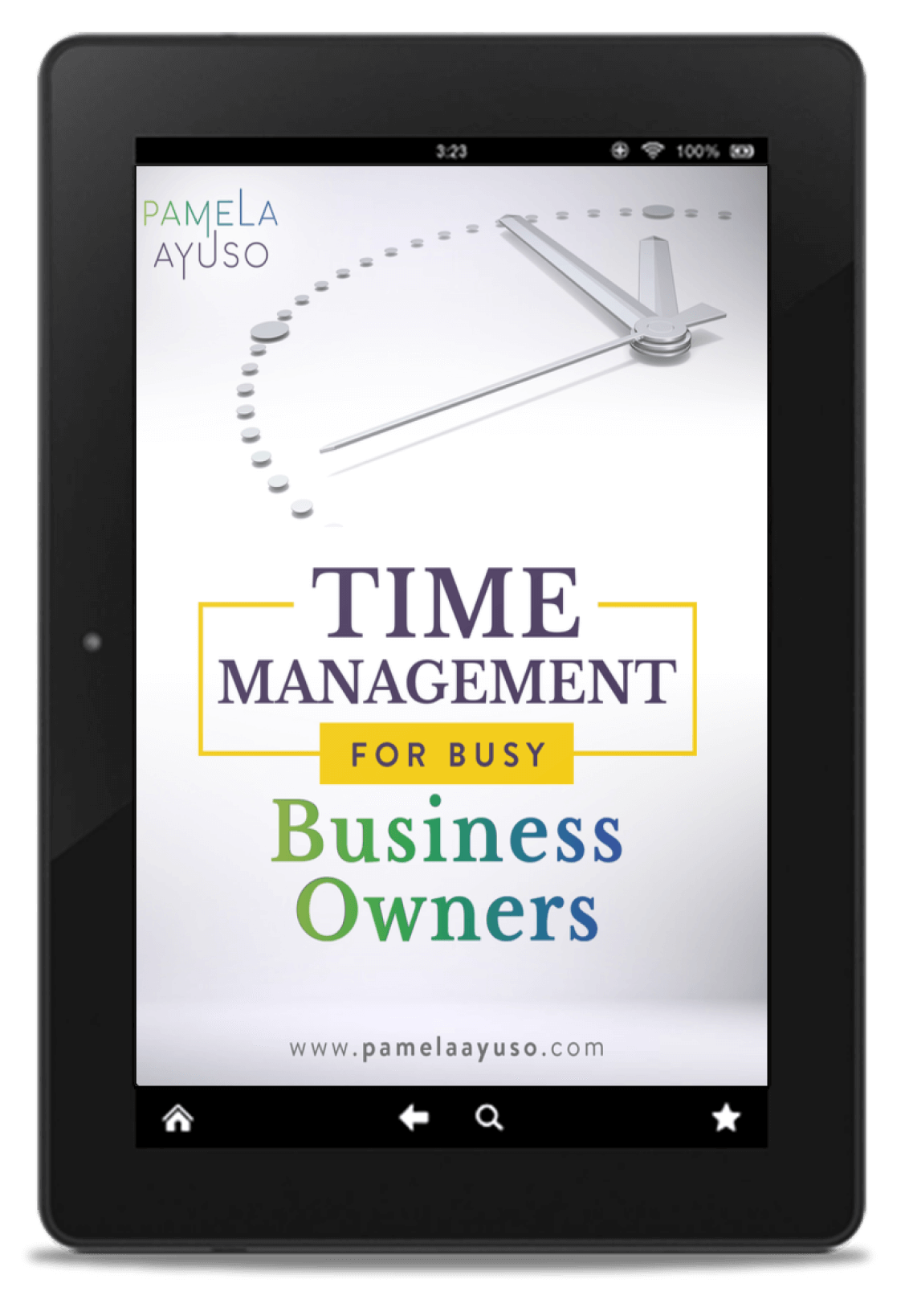It is time to invest in your education and development. There may be a course you have been meaning to take or a conference you have wanted to attend. Do not wait any longer, as you are your most precious asset, and you should invest in yourself fully. You and your growth are all you can truly control after all....
Read MoreWhat i’m writing about

Bring It All Together: How to Implement Processes in a Nutshell – Part 1
Once a business grows to a certain level of success, it becomes an absolute necessity to organize daily tasks to avoid mistakes. Errors happen all the time, and inconsistencies can result in unhappy customers, tense employees, and unbudgeted costs.
The best way to organize these daily duties is to create and implement business processes. A process is a group of tasks that are performed within a business to obtain a specific objective—it is like a chain of events that guides a project from start to finish. By clearly outlining for yourself and your company what the main processes in your company are and how, ideally, they should work, you will gain greater efficiency.

New Software: When and How to Implement into Your Business
As a leader in a small or medium-sized company, you are already working with a set of software solutions that take care of most of the organization’s transactions, such as sales, purchasing, and accounting. These systems were usually implemented when the company was in its beginning phases. When the company didn’t have any systems yet, you probably invested in the best software available within your budget and solved as many of the transactions in your company as possible.
As is often the case in small to medium-sized companies, budgets are usually constrained, which means that the set of systems you have implemented for the company will not be flawless. You may have already invested in separate software for sales, accounting, project management, and document storage. Alternatively, you may have invested in an Enterprise Resource Planning (ERP) solution, which is a single solution that integrates a variety of areas in your company. No matter what combination you are working with, there will almost always be gaps.

Maintaining Faith: Build It and They Will Come
If your product is built right for your client, they will come. More often than not, it will work out as you envisioned.

One Way to Increase Your Productivity: Keep What You Need Close
Each day, we have the same amount of time to do what we set out to accomplish. We can’t create any more time, and there also has to be enough time to rest and do other activities outside of work. It makes sense, therefore, to use the time we do have for work as productively as possible. The more efficient you are, the easier you will make your daily work for yourself. Every second that you can save in your everyday routine will add up and contribute to more useful time overall.
One way to be more productive is to keep everything you need, both digitally and physically, close at hand and easily accessible. Knowing where everything is located and being able to find it with no wasted effort will save you tremendous time. Suppose you spend an average of one minute a day looking for documents or any tool you need to do your work. Of course, this amount of time is on the lower end, as we generally waste much time searching for lost emails, files, or sorting through pens that don’t work. If you work 250 days a year, that is four hours a year you spend looking for lost items. Now suppose the average goes up to five minutes a day– that adds up to over 20 hours a year.

The Value of a Little Patience When Automating Processes
When implementing a new process in a company, it takes some time to find a new rhythm of work. Routines and habits must change, and the team has to adjust to the new way of doing things. It requires patience, and sometimes, in the middle of the transition, you may wonder whether it will ever work.
Once the implementation is completed successfully, though, it’s beautiful to see. The process you had been working on now operates independently without you having to do anything about it. The team, the systems, and the processes have all adapted, and the new way of doing things is the new normal.

How to Make Sense of This Crazy World
I used to think that I could build a perfectly structured company in which everything would be neat and tidy. I tirelessly designed and organized the company to ensure the structure would be failproof. Little by little, that idea was slowly torn apart as I discovered how little is actually in my control. The world and life itself can change in an instant. An organization will be put under stress and sometimes experience failures no matter how organized it is.
At times the changes may come slowly and are easier to adapt to. Other times, a circumstance may be a game changer and can present itself unexpectedly, to which we have no choice but to adapt. Given that this is how the world operates, how can we succeed in the middle of all this uncertainty? How do we operate effectively in a world that sometimes makes no sense? I don’t have all the answers, but I do have some strategies I’ve been experimenting with for some time.

Assess How Effective You Are at Delegating
As you advance in your career, the ability to delegate becomes more important. By delegating, you will have more time to focus on the work where you can add the most value. You will also provide the space for others to get valuable training and move up in their careers. Take a moment today and assess your effectiveness in delegating.
To start, analyze your current workload. Some of the questions you can ask yourself are:
-
What are you doing today that you can delegate to free up time for yourself?
-
Is there a specific task that only you can do which you are neglecting to do something that another person on the team can do?
-
Can someone do part of the work you are doing more effectively (or efficiently) than you?

Why You Need to Practice Perseverance to Achieve More of Your Goals
Perseverance is one of the key ingredients to accomplishing anything worthwhile in life and professionally. Growth is not always linear: there are usually ups and downs. Sometimes it may even feel like you took two steps back when what you intended was to move forward. At times like these is where perseverance is most useful; it encourages us to keep going. You may not know for sure when you’ll get there or what you will discover along the way, but perseverance will ensure you keep going long enough to find out.
According to Merriam-Webster, the definition of perseverance is:
“continued effort to do or achieve something despite difficulties, failure, or opposition”
Setbacks happen often enough that it is difficult to stay on track. Part of growth is persevering: having the ability to face challenges and move past them. The problems we encounter can either be defeating empowering. Instead of pushing us to quit, they can help us grow in our capacities as professionals and leaders. Once we achieve our objectives, we will be able to handle more.

Configuring Processes to Gain More Efficient Results
Our company recently underwent a company-wide process revamp: we examined all our processes, revised the content, and standardized the formatting since it was not consistent across departments. This project underlined the importance of setting up processes to be as clean and organized as possible with proper categorization and structuring. This deliberate configuring helps the user focus on the language itself and not be distracted by discrepancies in the arrangement of the processes.
We have processes for every department within our company. Some departments, like Finance, have more processes than others based on the nature of the work. For more on how we use processes at Celaque, our firm, please refer to my blog posts on processes: The Benefits of Implementing Processes in Your Business, How to Improve and Grow Your Business with Effective Processes, and 6 Useful Ideas to Make Your Processes More Streamlined.

Your Physical Workspace: How to be Organized, Efficient, and Comfortable
The space we inhabit affects us more than we might imagine. It is the place where our best ideas and work come to fruition. It is also the place where we spend most of our waking hours. If we don’t feel comfortable, we may not be as productive as we would otherwise be. At the very least, we owe it to ourselves to work in an environment that brings out the best in us and in which we are at ease.
This space may not just be in your office– it can also be at home. Both at home and in the office, you can make that space work for you and practical for the work you want to accomplish. At the office, you may have less control over the matter, since you’ve probably been assigned a specific location. Although its physical location might not be your choice, you can always make your work area yours by taking some simple actions.

Bring It All Together: How to Implement Processes in a Nutshell – Part 2
If you are thinking about implementing processes at your company, the task of doing so can feel daunting. Additionally, getting the infrastructure off the ground is a lot of work, but it’s also a great investment of time and effort.
Processes are a group of tasks that are performed to obtain a desired objective within a company. Outlining the main processes and implementing them for you and your team will result in greater efficiency, adaptability, and peace of mind. In Part 1 of this post (add link), I outlined the initial steps for implementing processes at a firm.

Bring It All Together: How to Implement Processes in a Nutshell – Part 1
Once a business grows to a certain level of success, it becomes an absolute necessity to organize daily tasks to avoid mistakes. Errors happen all the time, and inconsistencies can result in unhappy customers, tense employees, and unbudgeted costs.
The best way to organize these daily duties is to create and implement business processes. A process is a group of tasks that are performed within a business to obtain a specific objective—it is like a chain of events that guides a project from start to finish. By clearly outlining for yourself and your company what the main processes in your company are and how, ideally, they should work, you will gain greater efficiency.

New Software: When and How to Implement into Your Business
As a leader in a small or medium-sized company, you are already working with a set of software solutions that take care of most of the organization’s transactions, such as sales, purchasing, and accounting. These systems were usually implemented when the company was in its beginning phases. When the company didn’t have any systems yet, you probably invested in the best software available within your budget and solved as many of the transactions in your company as possible.
As is often the case in small to medium-sized companies, budgets are usually constrained, which means that the set of systems you have implemented for the company will not be flawless. You may have already invested in separate software for sales, accounting, project management, and document storage. Alternatively, you may have invested in an Enterprise Resource Planning (ERP) solution, which is a single solution that integrates a variety of areas in your company. No matter what combination you are working with, there will almost always be gaps.

Maintaining Faith: Build It and They Will Come
If your product is built right for your client, they will come. More often than not, it will work out as you envisioned.

One Way to Increase Your Productivity: Keep What You Need Close
Each day, we have the same amount of time to do what we set out to accomplish. We can’t create any more time, and there also has to be enough time to rest and do other activities outside of work. It makes sense, therefore, to use the time we do have for work as productively as possible. The more efficient you are, the easier you will make your daily work for yourself. Every second that you can save in your everyday routine will add up and contribute to more useful time overall.
One way to be more productive is to keep everything you need, both digitally and physically, close at hand and easily accessible. Knowing where everything is located and being able to find it with no wasted effort will save you tremendous time. Suppose you spend an average of one minute a day looking for documents or any tool you need to do your work. Of course, this amount of time is on the lower end, as we generally waste much time searching for lost emails, files, or sorting through pens that don’t work. If you work 250 days a year, that is four hours a year you spend looking for lost items. Now suppose the average goes up to five minutes a day– that adds up to over 20 hours a year.

The Value of a Little Patience When Automating Processes
When implementing a new process in a company, it takes some time to find a new rhythm of work. Routines and habits must change, and the team has to adjust to the new way of doing things. It requires patience, and sometimes, in the middle of the transition, you may wonder whether it will ever work.
Once the implementation is completed successfully, though, it’s beautiful to see. The process you had been working on now operates independently without you having to do anything about it. The team, the systems, and the processes have all adapted, and the new way of doing things is the new normal.

How to Make Sense of This Crazy World
I used to think that I could build a perfectly structured company in which everything would be neat and tidy. I tirelessly designed and organized the company to ensure the structure would be failproof. Little by little, that idea was slowly torn apart as I discovered how little is actually in my control. The world and life itself can change in an instant. An organization will be put under stress and sometimes experience failures no matter how organized it is.
At times the changes may come slowly and are easier to adapt to. Other times, a circumstance may be a game changer and can present itself unexpectedly, to which we have no choice but to adapt. Given that this is how the world operates, how can we succeed in the middle of all this uncertainty? How do we operate effectively in a world that sometimes makes no sense? I don’t have all the answers, but I do have some strategies I’ve been experimenting with for some time.

Assess How Effective You Are at Delegating
As you advance in your career, the ability to delegate becomes more important. By delegating, you will have more time to focus on the work where you can add the most value. You will also provide the space for others to get valuable training and move up in their careers. Take a moment today and assess your effectiveness in delegating.
To start, analyze your current workload. Some of the questions you can ask yourself are:
-
What are you doing today that you can delegate to free up time for yourself?
-
Is there a specific task that only you can do which you are neglecting to do something that another person on the team can do?
-
Can someone do part of the work you are doing more effectively (or efficiently) than you?

Why You Need to Practice Perseverance to Achieve More of Your Goals
Perseverance is one of the key ingredients to accomplishing anything worthwhile in life and professionally. Growth is not always linear: there are usually ups and downs. Sometimes it may even feel like you took two steps back when what you intended was to move forward. At times like these is where perseverance is most useful; it encourages us to keep going. You may not know for sure when you’ll get there or what you will discover along the way, but perseverance will ensure you keep going long enough to find out.
According to Merriam-Webster, the definition of perseverance is:
“continued effort to do or achieve something despite difficulties, failure, or opposition”
Setbacks happen often enough that it is difficult to stay on track. Part of growth is persevering: having the ability to face challenges and move past them. The problems we encounter can either be defeating empowering. Instead of pushing us to quit, they can help us grow in our capacities as professionals and leaders. Once we achieve our objectives, we will be able to handle more.

Configuring Processes to Gain More Efficient Results
Our company recently underwent a company-wide process revamp: we examined all our processes, revised the content, and standardized the formatting since it was not consistent across departments. This project underlined the importance of setting up processes to be as clean and organized as possible with proper categorization and structuring. This deliberate configuring helps the user focus on the language itself and not be distracted by discrepancies in the arrangement of the processes.
We have processes for every department within our company. Some departments, like Finance, have more processes than others based on the nature of the work. For more on how we use processes at Celaque, our firm, please refer to my blog posts on processes: The Benefits of Implementing Processes in Your Business, How to Improve and Grow Your Business with Effective Processes, and 6 Useful Ideas to Make Your Processes More Streamlined.
Explore


Pamela Ayuso is an author and the co-founder and CEO of Celaque. She is a real estate entrepreneur and developer who has executive leadership experience in two of the most successful real estate developers in Honduras — managing operations at Alianza and leading Celaque. Celaque develops office and residential buildings and manages a broad portfolio of properties. Pamela’s focus is on growing Celaque into a model for the 21st-century company.
In addition to her role as CEO at Celaque, Pamela is a writer that offers practical business and personal development insights for other entrepreneurs and business leaders on her blog and LinkedIn. She published her first children’s book in 2019, Alicia and Bunnie Paint a Mural.
Improve Your Time MANAGEMENT
Join our mailing list and receive our free Time Management for Busy Business Owners e-book.
Pamela Ayuso will use the information on this form to be in touch with you and provide updates. You can change your mind at any time by clicking the unsubscribe link in the footer of any email you receive from us, or by contacting us at pamela@pamelaayuso.com. We will treat your information with respect. We use cookies and similar technologies to run this website and help us understand how you use it. For more information, read our Privacy Policy.


ABOUT THE AUTHOR
Pamela Ayuso is an author and the co-founder and CEO of Celaque. She is a real estate entrepreneur and developer who has executive leadership experience in two of the most successful real estate developers in Honduras — managing operations at Alianza and leading Celaque. Celaque develops office and residential buildings and manages a broad portfolio of properties. Pamela’s focus is on growing Celaque into a model for the 21st-century company.
In addition to her role as CEO at Celaque, Pamela is a writer that offers practical business and personal development insights for other entrepreneurs and business leaders on her blog and LinkedIn. She published her first children’s book in 2019, Alicia and Bunnie Paint a Mural.


ABOUT THE AUTHOR
Pamela Ayuso is an author and the co-founder and CEO of Celaque. She is a real estate entrepreneur and developer who has executive leadership experience in two of the most successful real estate developers in Honduras — managing operations at Alianza and leading Celaque. Celaque develops office and residential buildings and manages a broad portfolio of properties. Pamela’s focus is on growing Celaque into a model for the 21st-century company.
In addition to her role as CEO at Celaque, Pamela is the author of Amazon best-selling book, Heptagram: The 7-Pillar Business Design System for the 21st Century. She offers practical business and personal development insights for other entrepreneurs and business leaders on her blog and LinkedIn. Her husband and her three wonderful daughters inspired the story of her first children’s book, Alicia and Bunnie Paint a Mural.

Pamela Ayuso will use the information on this form to be in touch with you and provide updates. You can change your mind at any time by clicking the unsubscribe link in the footer of any email you receive from us, or by contacting us at contact@pamelaayuso.com. We will treat your information with respect. We use cookies and similar technologies to run this website and help us understand how you use it. For more information, read our Privacy Policy.
Looking for something else? Search to find more practical tips from Pamela.

